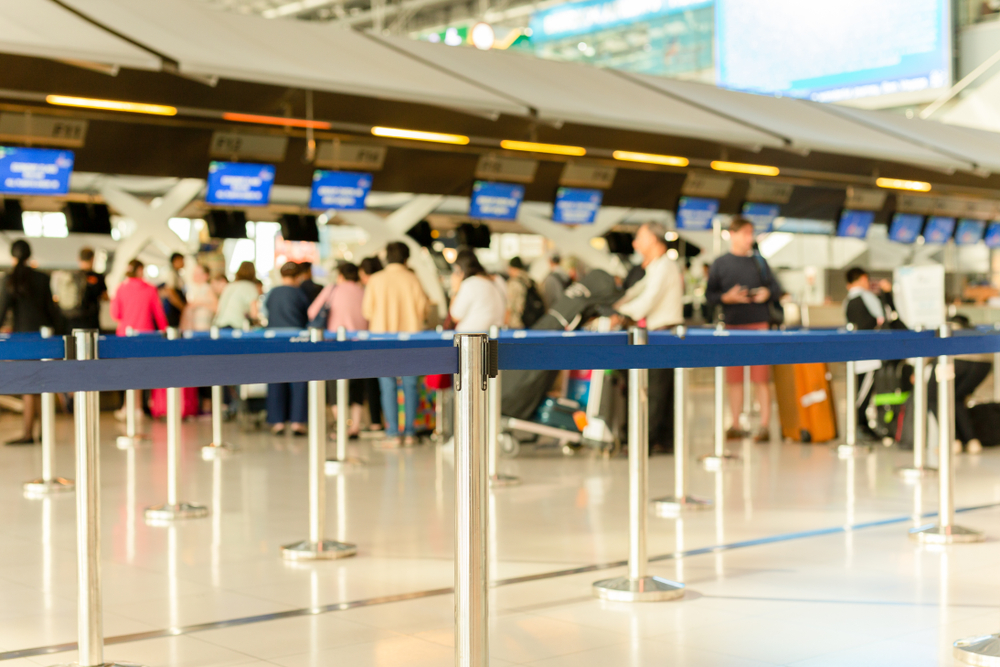Airports—love them or hate them. They’re often the first hurdle to your trip, and long lines can make even the most excited traveler feel frustrated. From check-in counters to security screenings, waiting in line can feel like a time-sucking ordeal. But what if you could skip those lines and breeze through your airport experience? Here’s a guide on how to make your journey smoother and faster, so you can spend less time waiting and more time enjoying your trip.
Pre-Flight Strategy
One key to avoiding long waits at the airport is timing your arrival. Airports tend to be busiest during peak hours, usually in the morning and late afternoon. For domestic flights, aim to arrive at least 2 hours before your departure, and for international flights, give yourself a 3-hour buffer. Arriving during off-peak hours can help you dodge long lines and crowded security areas.
Additionally, if you’re flying from a major airport, consider choosing an airline that operates out of a terminal known for shorter wait times. Some terminals may have faster check-in processes or shorter security lines than others, especially during peak times. Many airports post terminal-specific wait times and tips on their website, so checking ahead can help you make an informed decision about which airline to fly with and which terminal to use for a smoother experience.
Check-In Tips
One of the easiest ways to avoid long lines at the airport is by handling your check-in ahead of time. Online check-in and mobile boarding passes are game-changers. Many airlines let you check in as early as 24 hours before your flight, allowing you to bypass the crowded check-in counters altogether. You’ll simply head straight to security, phone in hand, with your boarding pass ready to go. If your airline doesn’t offer mobile boarding passes, you can still check in online and print your boarding pass at home.
Some airports also have self-check-in kiosks, which are perfect for travelers who prefer to print their own boarding passes or check their bags. These kiosks usually have shorter lines than traditional counters and help you get through the process quickly. Just make sure to keep your ID and flight details handy for a smooth experience. In addition, some airlines offer curbside check-in or dedicated counters for frequent flyers or business-class passengers.
Security Screening Tips
When it comes to security screening, a little preparation can go a long way in helping you skip some of the hassle. The first step is to pack efficiently. Keep your liquids, gels, and electronics in an easily accessible part of your bag, as you’ll need to remove them for screening. Having these items ready to go will save you from fumbling around when it’s your turn.
Another helpful tip is to wear slip-on shoes. Since you’ll need to remove your shoes at the security checkpoint, opting for something easy to take off can save you time. Also, avoid wearing bulky clothing with lots of metal—it can slow you down as you go through the scanner. Be sure to familiarize yourself with TSA’s rules on prohibited items, too. For example, even small amounts of liquids over 3.4 ounces can result in additional screenings. Knowing what you can and can’t bring helps avoid delays and ensures you’re not caught off guard.
Pre-Screening Services
If you travel frequently, enrolling in TSA PreCheck or Global Entry is one of the best ways to streamline your airport experience. TSA PreCheck, run by the U.S. government, provides expedited security screening at most U.S. airports, allowing you to keep your shoes, belt, and jacket on and leave your laptop and liquids in your bag. It’s designed for domestic travelers and is relatively inexpensive, with an application fee of around $85 for a five-year membership. If you mostly fly within the U.S., TSA PreCheck is an excellent choice to save time and hassle at security.
For international travelers, another government program called Global Entry offers even more benefits. It includes all the perks of TSA PreCheck for domestic flights, but also expedites your entry back into the U.S. when you return from abroad. Through Global Entry, you can skip long lines at customs and immigration, speeding up your arrival back home. The application fee for Global Entry is around $100 for five years, which is a bit higher than TSA PreCheck, but it also covers both expedited security and customs. Also, bear in mind that the Global Entry application process involves an in-person interview, which can add some extra steps compared to TSA PreCheck’s more straightforward process.
Use Priority Lanes or Lounge Access
If you’re looking to skip the crowded areas and make your airport experience more relaxing, consider gaining access to priority lanes or airport lounges. Many airports offer expedited lanes for travelers flying in business or first class, or for frequent flyers. These priority lanes allow you to bypass the long lines at security and sometimes even customs, so you can move through the airport more quickly.
Additionally, airport lounges provide a quiet and comfortable place to wait for your flight, away from the crowds. While most lounges are reserved for business or first-class passengers, many credit cards offer access to lounges as a perk, even if you’re flying economy. What’s more, some airports also allow travelers to pay for lounge access directly, giving you a peaceful space to relax, recharge, and enjoy complimentary snacks before your flight.
You Might Also Enjoy: Doing TSA Right: Here’s How to Get Through Airport Security Faster
Use Mobile Apps and Technology
Finally, technology can be your best friend when it comes to avoiding airport headaches. Several mobile apps can help you track wait times at security checkpoints, notify you of gate changes, and even update you on flight delays in real-time. Apps like MyTSA or airport-specific apps provide live information that can help you navigate the airport more efficiently and avoid wasting time in long lines. MyTSA also allows you to track security wait times and make more informed decisions about when to head to the checkpoint.
Additionally, apps like FlightAware provide real-time flight tracking, including delays, cancellations, and gate changes, helping you stay updated on your flight status. TripIt organizes your travel itinerary and syncs with your calendar to keep you on top of flight details. Many airports are also adopting their own digital tools that provide detailed maps of terminals, helping you quickly find your gate, food options, or lounges.
FAQs:
Q: What documents do I need to bring to the airport?
A: You’ll need a valid government-issued ID, such as a driver’s license or passport, and your boarding pass. For international flights, a passport is essential, and some countries may require a visa. Always check your airline’s requirements in advance.
Q: Can I bring snacks through security?
A: Yes, you can bring snacks, but they must comply with TSA’s liquid and gel restrictions. Solid foods like fruit, granola bars, and crackers are allowed, while liquids (like yogurt or dips) must be under 3.4 ounces.
Q: Can I check my bags early?
A: Many airlines allow you to check bags 4-12 hours before your flight, but this depends on the airport and airline. Check with your airline in advance to confirm their specific check-in window.
Q: How can I get through customs faster?
A: Using Global Entry or Mobile Passport Control can expedite the customs process. These programs allow you to use dedicated kiosks for faster processing when re-entering the U.S. from international travel.
Q: Do I need to print my boarding pass?
A: No, most airlines now offer mobile boarding passes through their apps, which you can use directly from your smartphone. However, if you prefer, you can print your boarding pass at home or at self-check-in kiosks at the airport.
Do you have any tips for avoiding lines at the airport? Tell us about them in the comments below!







